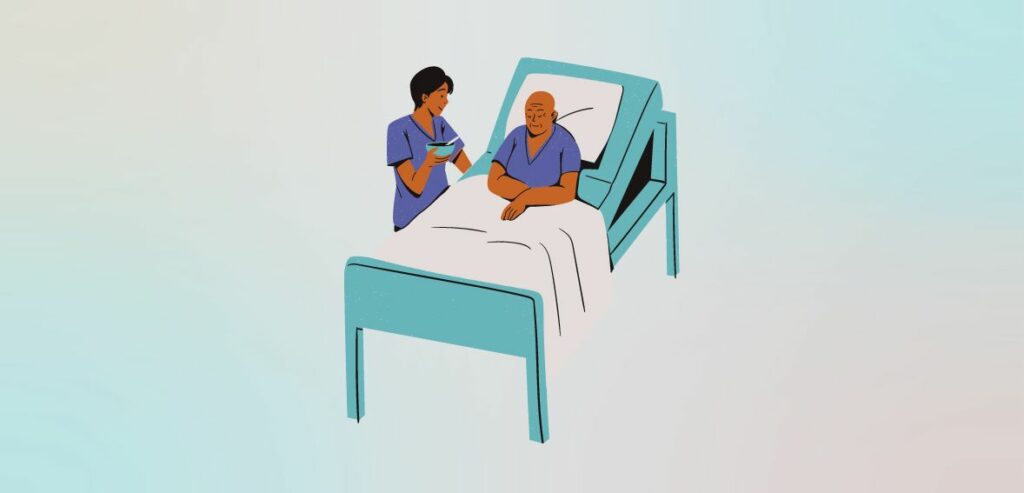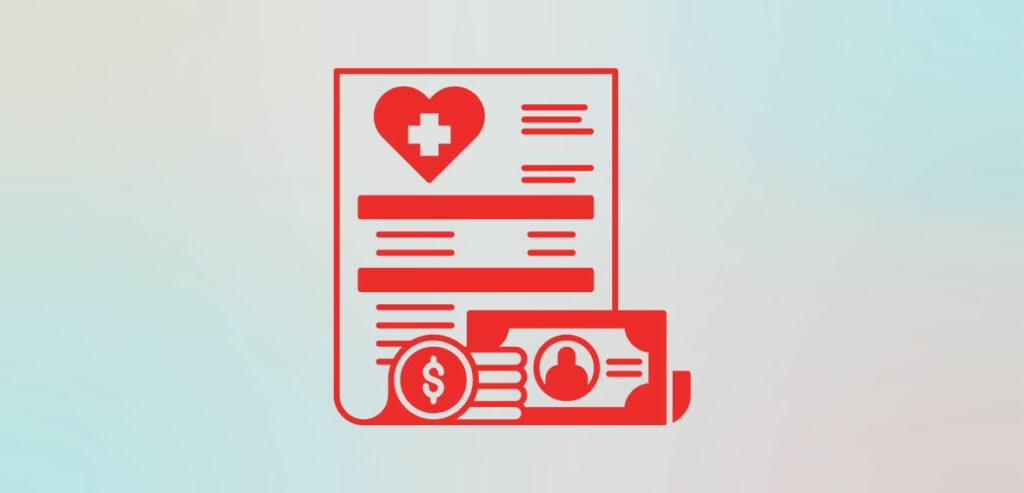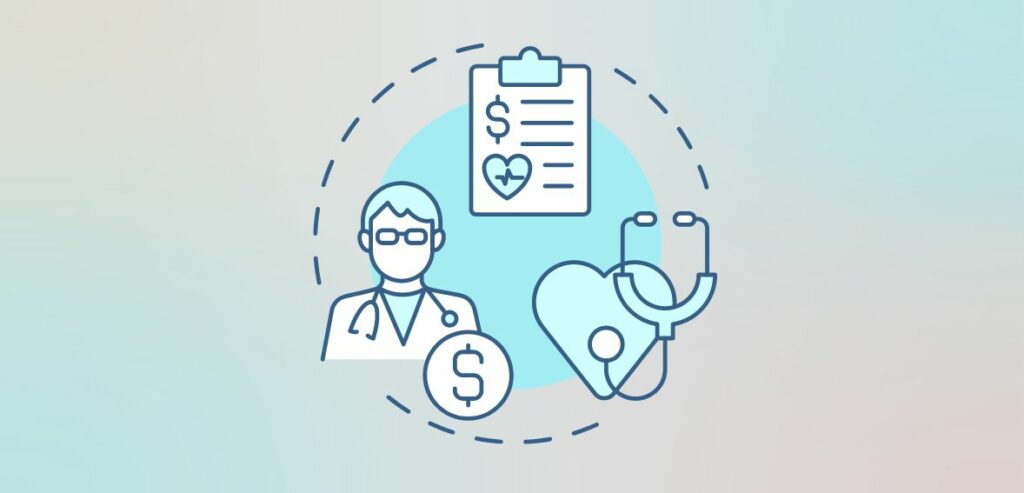Affordable healthcare is essential for patients to access necessary medical treatment. Shockingly, a report reveals that almost 40% of Americans opt out of treatment due to its exorbitant costs. On the flip side, unpaid medical bills pose a significant challenge for healthcare providers, hindering their cash flow and making it difficult to meet financial obligations. Patient financing in healthcare practices emerges as a viable solution.
By incorporating various patient financing options into your practice, you can tailor solutions to meet your and your patient’s financial needs. Keep reading to understand why offering patient financing is a valuable strategy for your medical practice.
Understanding Patient Financing

Patient finance has become a critical aspect in the ever-evolving healthcare sector. Today’s patients are reevaluating their expectations, prompting a reconsideration of traditional models governing the practice-client relationship. In this dynamic environment, clinics, treatment centers, and beauty businesses must adapt their service types and methods to meet the growing demand for better responsiveness, adaptability, and flexibility in daily customer interactions.
One crucial aspect under scrutiny is financial arrangements. Modern health businesses that offer a diverse range of flexible billing and payment options become more appealing to a broad spectrum of patients that includes both existing and potential. Integrating healthcare finance leads to a more satisfied client base and enhances the likelihood of being chosen over competitors.
Introducing financing allows your business to offer patients affordable monthly payment plans. From the customer’s standpoint, it presents a more economical and adaptable alternative compared to less favorable models like high-interest loans. Clients actively seek options such as 0% finance and interest-bearing packages, allowing them to distribute the cost of treatments according to their expectations and needs.
Types Of Patient Financing Options At Medical Practices

Your medical practice can offer patient financing in various ways:
- Medical Care Financing (Third-Party):
Utilizing loans for medical care benefits healthcare providers and consumers, introducing a third party into the equation. These healthcare loans come with favorable interest rates, offering advantages over personal loans. They ensure immediate payment to the medical practice, with the lender handling the payment agreement directly with the consumer.
This arrangement helps maintain the financial health of medical practices, preventing patients from ending up in collections. However, it’s essential to note that these loans do incur interest and affect credit similarly to other types of loans. As a result, they are well-suited for addressing larger bills, but patients might be hesitant to navigate the complexities for smaller amounts.
- In-House Payment Plans:
The medical practice provides Internal financing plans, allowing patients to make scheduled payments over time instead of a lump sum. While this approach simplifies the process by eliminating intermediaries, it poses a significant financial risk for the practice.
These plans benefit patients by accruing no interest on medical debt with the healthcare provider. However, as the bill size increases, the associated risk makes it less desirable for the practice.
- BNPL Program:
A patient financing solution with flexible term lengths and zero interest, BNPL programs enable patients to divide medical bills into manageable payments. Common in retail, BNPL is a third-party payment plan that offers accessibility. Like loans without credit bureau reporting (unless payments are missed), BNPL programs carry lower interest rates. This makes them an attractive option for larger medical bills, providing the benefits of a loan without as many drawbacks that might deter patients from seeking preventative care they can’t immediately afford.
Payment plans through a BNPL program can vary from short-term (4-12 payments) to long-term (36 payments or more), with zero interest applied to shorter plans. Longer plans may incur some interest, typically lower than traditional loans.
Reasons Why Patient Financing Options Are Important

- Many Medical Procedures Not Covered by Insurance:
In the harsh reality of healthcare, patients are often faced with the disheartening truth that their insurance covers less, and they end up paying more. Over the last five years, deductibles for individuals with health insurance plans have risen by 10% over the past decade. The widespread shift towards high deductible health plans by employers and employees has made copays and out-of-pocket expenses a growing financial burden, becoming more challenging for patients to manage. The economic landscape, marked by high unemployment rates and healthcare costs reaching unattainable levels, further complicates this predicament for many individuals.
Offering a diverse range of payment options tailored to patient’s individual needs is a mutually beneficial solution. This approach allows patients to settle their medical bills gradually, easing the financial strain, while providers experience a boost in practice revenue and a reduction in the accumulation of bad debt.
- Customers Want Financing Options
In today’s era of consumerism, patients’ expectations in the healthcare industry mirror those of any other consumer-driven domain. Our world is intricately designed for convenience, with various industries offering flexible payment options tailored to consumer preferences. Modern consumers expect flexibility in their transactions, whether the ease of paying over time with no or low-interest financing.
And it is the harsh truth that the healthcare sector has been slower to adapt, lagging behind the streamlined payment processes seen in other industries. Despite the widespread adoption of digital transactions and payment systems in nearly every sector, most healthcare practices still rely on traditional paper billing methods. This discrepancy highlights a considerable gap between the expectations of modern consumers and the current state of payment practices within the healthcare industry.
- Unaffordable Healthcare Costs for Many Patients
In today’s challenging financial landscape, patients are grappling with unprecedented economic strain. With a 3.4% inflation rate in the US, the expectation that patients can readily pay their medical bills upfront and in full is becoming increasingly unrealistic. The soaring expenses associated with healthcare pose a significant dilemma for numerous families. Faced with the prospect of depleting their savings to access necessary care, many patients forego medical tests and procedures to save money.
Providing flexible payment options for patients eases the burden of financial stress related to medical costs and promotes a healthier lifestyle by removing the primary obstacle to care: the inability to pay in full for medical services. While financial difficulties may lead some patients to skip essential care altogether, those offered the option to pay over time are notably more likely to proceed with receiving the necessary medical attention.
- Transparency is always Favored by the Patients
In the current healthcare environment, transparency has become crucial, with patients extensively researching their options. Before committing to a medical service, they seek a clear understanding of upfront costs and financing possibilities. This information is pivotal in deciding which healthcare provider to choose for their care. Moreover, people are inclined to switch providers, favoring low-interest or zero-interest patient financing, demonstrating the impact of financial considerations on healthcare choices.
Nowadays, providers gaining a competitive edge are acknowledging the significant role patient financing plans and digital payment options play in influencing patients’ decisions about where to seek care. Providers adapting their patient billing experience with Patient Management Bridge accordingly are better positioned to meet the evolving expectations of patients.
Benefits Of Patient Financing In A Healthcare Setting

1. Easy-to-Handle Payment Options
Providing patient financing options empowers healthcare providers to offer manageable payment plans, allowing patients to break down their medical costs into easily handled segments. The advantages of patient financing extend beyond facilitating payments:
- Increased Patient Volume: Satisfied patients tend to remain loyal to a healthcare provider or practice and are more likely to refer friends and family, increasing patient volume.
- Reduced Collection Burden: Patient financing options lessen the likelihood of bills going to collections, alleviating the burden associated with billing and collection procedures.
- Boosted Revenue: Enhanced patient retention and improved collections contribute to an overall increase in revenue for healthcare providers.
2. Enhanced Patient Satisfaction
The availability of financing options can significantly improve patient retention. Simplifying out-of-pocket expenses before service delivery makes individuals more inclined to seek care.
Patients appreciate medical providers who minimize the frequency of calls and letters regarding bills. Implementing payment plans fosters patient trust, signaling that your practice prioritizes exceeding the expectations of other healthcare professionals in meeting their needs.
3. Increase Patient Referrals For Your Practice
In the healthcare sector, the significance of satisfied patients extends beyond individual experiences—it has a ripple effect on the provider’s network. Like satisfied consumers in any industry, content patients are inclined to share positive experiences, leading to increased patient referrals. When patients are pleased with their care and find the payment process satisfactory, they become natural advocates for their healthcare provider.
Surprisingly, 63% of patients have expressed willingness to switch healthcare providers if their payment experience falls short of satisfaction. This underscores the critical role of the payment process in overall patient satisfaction and loyalty. Providers who prioritize a positive payment experience retain their existing patient base and unlock the potential for organic growth through referrals from satisfied patients.
4. Effective Marketing Tool
As highlighted earlier, individuals may opt out of medical treatment due to cost concerns. Conversely, many individuals actively utilize available payment options. Considering the significant number of Americans forgoing medical care due to its high costs, providing patient financing at your practice can attract more patients. It has the potential to enhance the popularity of your practice.
The widespread adoption of patient financing has led some providers to leverage it as a marketing tool. Offering flexible payment solutions sets your clinic apart from others in the community, making it a more attractive choice for potential patients.
5. Stable Cash Flows
Providing healthcare payment plans is beneficial for maintaining consistent cash flows, particularly in practices involving out-of-pocket expenses.
These plans alleviate the financial burden on patients, eliminating the need for them to face difficulties in settling their medical bills. Rather than waiting for lump-sum payments, you can enjoy a regular and predictable stream of payments each month, requiring minimal additional effort.
6. Streamlined Payment Collection
When it comes to healthcare solutions, simplifying payment collection is crucial for doctors seeking financial stability. Doctors significantly enhance their prospects of securing timely payments by providing patients with financing options. It’s important to note that the primary obstacle to patient payments often lies in the absence of flexible payment alternatives rather than a reluctance to settle bills.
Moreover, introducing financing choices is a gateway to vital financial discussions between healthcare providers and patients regarding their financial burden. This promotes a deeper understanding of the patient’s situation and amplifies the chances of successful payment transactions. These financing options streamline payment processes and pave the way for meaningful financial interactions between healthcare professionals and their patients.
Conclusion
The imperative for medical and healthcare practices to offer patient financing is underscored by its profound impact on patients and providers. Affordable healthcare is fundamental, yet a substantial percentage of Americans forego necessary treatments due to prohibitive costs. Integrating diverse patient financing options addresses this challenge, providing a mutually beneficial solution.
By embracing patient financing, healthcare practices mitigate the financial strain on individuals and enhance their financial stability. These options, from third-party medical care financing to in-house payment plans and BNPL programs, cater to varying patient needs and preferences. The benefits extend beyond financial considerations, encompassing increased patient satisfaction, loyalty, and the potential for organic growth through referrals.
Providing transparent, flexible payment options becomes a strategic advantage in a healthcare sector evolving towards consumer-centric models. Patient financing is a powerful tool for healthcare providers, fostering trust, reducing collection burdens, and ensuring stable cash flows. Ultimately, by recognizing the importance of patient financing, healthcare practices position themselves at the forefront of meeting the evolving expectations of a modern and financially conscious patient demographic.
Frequently Asked Questions
Q: Why is healthcare so challenging in the US?
Managing healthcare in the United States proves intricate due to the immense financial investments. With an annual spending exceeding $4.5 trillion, simplifying the system becomes a formidable task. Any attempt to streamline would necessitate reshuffling or eliminating some of these substantial expenditures.
Q: How is healthcare perceived as unfair in the US?
The existing US healthcare system exhibits a troubling tendency to postpone or deny high-quality care to those who need it the most but can least afford its exorbitant costs. This creates unjust healthcare disparities, particularly affecting people of color and other disadvantaged groups.
Q: What is the purpose of healthcare financing?
Healthcare financing is a fundamental function within health systems, playing a pivotal role in advancing universal health coverage. It achieves this by enhancing effective service coverage and ensuring financial protection for individuals.
Q: What are the major challenges to healthcare financing in the United States?
Critical challenges in healthcare financing arise from escalating costs of drugs, supplies, and labor. Factors such as longer hospital stays, sicker patients, and government reimbursement rates falling short of covering patient care costs contribute to a dire situation for hospitals and health systems.

